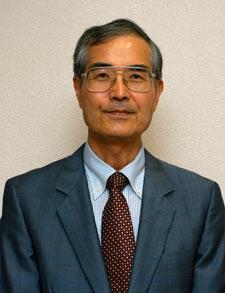
In the mid-1980s, Yoji Totsuka was the leader of a multi-million dollar proton decay detector that had yet to spot a single decayed proton. On the other hand, the background noise of neutrinos that zoomed through the detector was turning out to be interesting. Based on how scientists thought neutrino production should occur when cosmic rays interact in the atmosphere, the ratio of muon to electron neutrinos was wrong. In the mid-1990s, Totsuka led crucial experiments to explain what happened to the neutrinos.
Totsuka was born in 1942 in Fuji, Japan. He earned his bachelor's degree and Ph.D. from the University of Tokyo, finishing his studies in 1972, when he was hired to teach at the same institution. He became director of the Kamioka Observatory by 1995, and by the next year he watched over the first neutrino detection from the new, larger, Super-Kamiokande neutrino detector - 10 times larger.
An uncountable number of neutrinos zipped through the detector; yet only eight or nine a day would bump into a water nucleus and produce a tell-tale cone of light. The photosensitive detectors on the side of the pool could spot two of the three kinds of neutrinos—muon and electron, but they couldn't see the third type, tau neutrinos. The Super-Kamiokande detector also measured the rate of electron neutrinos from the sun, but Totsuka's team saw, as earlier detectors had as well, that there weren't as many as theory predicted. Scientists hypothesized that both neutrino puzzles (solar and atmospheric) might be explained if neutrinos changed their identity in flight. Two detectors were needed to help confirm this hypothesis: the Sudbury Neutrino Observatory (SNO)—which could spot tau neutrinos - directed by fellow Benjamin Franklin Medal winner Arthur McDonald; and more work from the Super-Kamiokande.
While Totsuka's detector didn't detect solar tau neutrinos, it could detect atmospheric neutrinos-electron and muon neutrinos that form in the earth's atmosphere due to cosmic rays. These have much higher energy than solar neutrinos, and are consequently easier to observe, though definitive measurement does require a big enough detector-so this was work Super-Kamiokande could do better than SNO. These atmospheric electron and muon neutrinos were detected in almost even numbers, when theory suggested there should be closer to twice as many muon neutrinos. When combined with the SNO data it confirmed that, while neutrinos had always been thought to be stable, neutrinos must oscillate into different forms as they travel. This ability to change meant that, according to the laws of quantum mechanics, neutrinos had mass. Suddenly what scientists thought they knew about the fundamental particles of nature had to be completely reevaluated.
In 2003, Totsuka became the Director General of Japan's high energy physics organization, KEK. His awards for furthering neutrino research are numerous, including: the Asahi Prize (1987), Nishina Prize (1988), Rossi Prize, American Astronomical Society, (1989), Inoue Prize (1990), EPS Special Prize, European Physical Society (1995) and the Order of Culture, Japan's most prestigious honor in the fields of culture and science (2004). In addition to his numerous scientific achievements, Totsuka is a 6th degree black belt in karate.
Information as of April 2007

